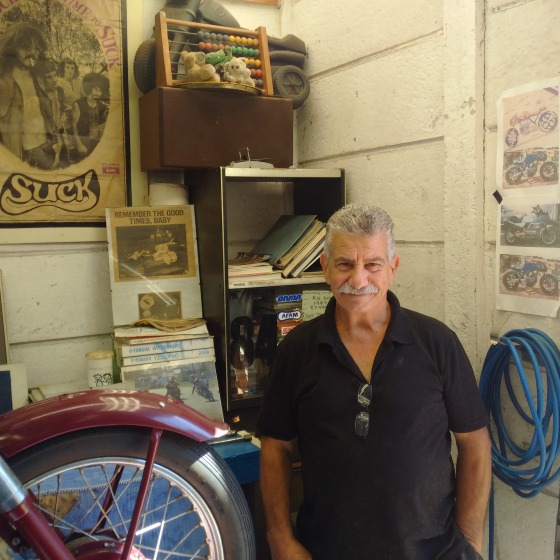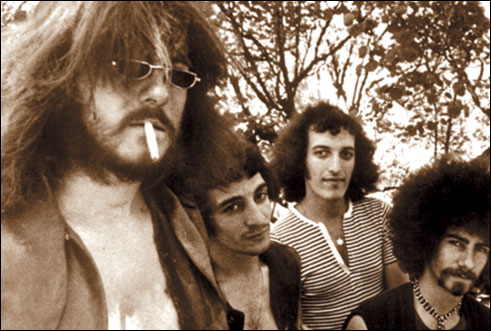I'm at my favourite record store in Cape Town bemoaning the lack of decent second-hand vinyl these days, when the conversation shifts to collectable South African records - is there such a thing you may ask, as a collector’s market for SA vinyl?
Among aficionados both local and international one thing is certain - LP's from around the world have become more and more collectable when it comes to certain artists, but more importantly, SA vinyl from the early 1950's onwards has not escaped the attention of serious collectors worldwide.
"So, what's the value of a decent copy of Time to Suck by that notorious band SUCK, on the Parlophone label?" I ask.
“Well,” says the owner, “we've recently sold a copy to a Russian collector for 20 G's.”
“Whaaaaat?” I croak, choking on my croissaint!!! 20000 rand for a piece of plastic!!
In 1970 when the record was released, you could buy a new copy for R1.99 at the local record shop, so do the math – it’s about a million and some percent profit over 50 years.
Even cryptocurrencies can't beat that performance it seems, so what’s going on?
And here's the story: during the late 60's local Johannesburg-based music promoter Clive Calder saw currency in 5 of the then " happening " groups of the time viz. Freedoms Children, Hawk, Otis Waygood Blues Band, Abstract Truth, and ominously, SUCK.
They began recording for Calder at EMI and each released albums over a period of some 5 years, in the process creating some of the most vital and original music ever to be released on these shores.
In most cases only very limited numbers were stamped at EMI's plant and sold to the public, and unlike European and American markets, were never released again. This is why their values have skyrocketed over the years. In most instances the groups themselves never became wealthy individuals, Calder later built a multi-million-pound music empire in the UK.
Unlike cryptocurrencies which have become huge investment traps, vinyl has some unique qualities which are much more attractive: you get something tangible. a large piece of plastic with a concentric layer of grooves, a central label identifying artist and record company, and most importantly - a hole in the centre!
Removed from a sleeve, most of which are visually gratifying to the eye, the shiny disc is placed on a turntable and the phono cartridge does the job of conveying the music to your ears. Unlike your cryptocurrency, the LP record doesn't spin out of control over bad news in the marketplace, it keeps appreciating in value over the years with successive hearings.
The thing that really intrigues me with the Suck album is this – essentially, it's a collection of heavy rock cover versions, only one original song on the entire record. Played with some ferocity, you can't help thinking these are some pretty mean dudes involved. The cover doesn't help, a young boy sitting in front of somebody's bass drum.
That drum belonged to Savvy Grande, who whacked the skins for Suck, along with cohorts Andy Ionnides, Louis "Moose "Forer and Steve Gilroy.
Open the cover and there you see the gringos in all their glory, in the heyday which saw them become the most notorious group in the country: they beat a path of musical mayhem and destruction around the country, eventually disbanding because no theatres would allow them to play.
"I certainly didn't get any money from Suck” says a chagrined Savvy, “instead I invested in the restoration of motorcycles, some of which are sold to collectors around the world, some ending up in museums in countries such as Portugal”. Cryptocurrencies don't interest me at all, I prefer to earn a living using my hands and my technical skills.
Steve Gilroy, a savvy Englishman who came to SA in the 60's has a different story:
After Suck disbanded, he started a publishing company in Johannesburg, and then began experimenting with home-made beer-making. After several years he expanded his skills into brewing fulltime. He established Gilroy’s in Muldersdrift, which has become popular for his craft beers and his Up Yours poems.
Talking it up has been the making of cryptocurrencies worldwide, but the vinyl revival has ensured that collectors around the globe have achieved more than satisfactory returns from their own collection investments - probably on a far greater measure both aurally and visually.
For those who have SA collectibles the news is good - those shiny plastic discs contain gold - kids, check out dad's or grandpa's record collection, there’s bound to be something valuable in there - so much more exciting than sitting on the pc chasing after shadows in the crypto world!
Garth Chilvers / Tom Jasiukowicz
Garth Chilvers and Tom Jasiukowicz published History of Contemporary Music of South Africa, 1994, Toga Publishing.




No comments:
Post a Comment